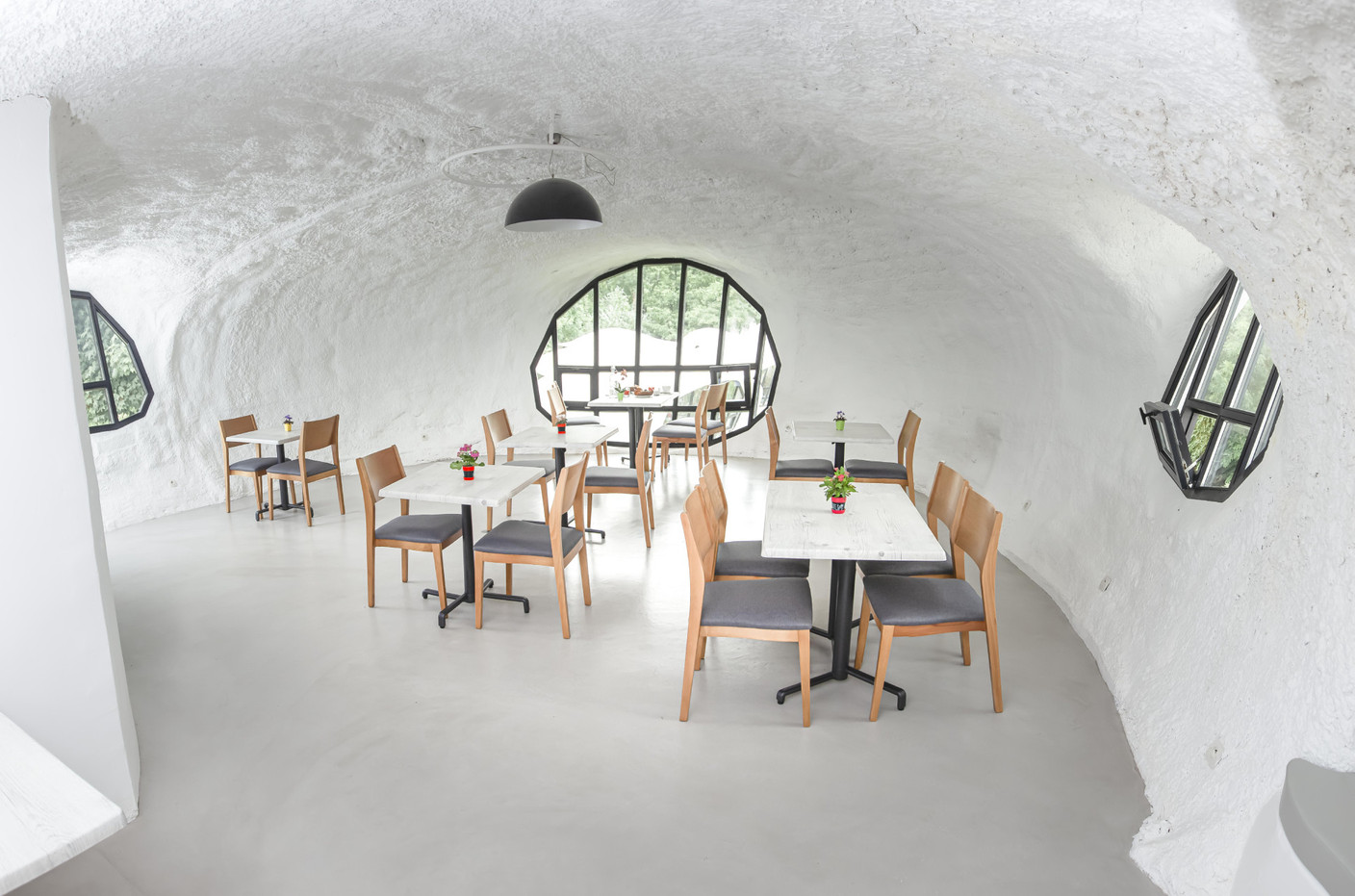It’s a site like no other, set on the peninsula of a small Vosges village, Raon l’Étape, at the crossroads of the French regions of Lorraine and Alsace and the Vosges Mountains. It is home to a utopian project by Franco-Swiss architects Pascal Haüsermann (1936-2011) and Claude Costy (born 1931), representatives of the visionary organic architecture of the 1960s and 70s: bubble houses designed to be run as a family motel in a green setting by the river.
The site has seen many ups and downs, periods of success... and oblivion. But since last July, the current owner, Parisian business lawyer Christophe Perchet, has relaunched the motel and entrusted the management of the nine bubbles to Lydia Lebreton.
A story in several stages
To fully understand this project, we need to go back in time. In the mid-1960s, entrepreneur and hotelier Maurice Thiery, who already owned “Le Lorraine Alsace” in Raon l’Étape, wanted to open an annex to his establishment on a peninsula he owned in Raon l’Étape. He entrusted the project to Haüsermann and Costy, who made a name for themselves building self-constructed bubble houses using a technique based on a concrete veil sprayed onto metal structures. The architects imagined a motel made up of bubble rooms, in dialogue with this exceptional natural site of 6,000m2, a peninsula hemmed in by two arms of the river Plaine and linked to the town by a small bridge.
After almost two years of work, the motel opened in 1969. A large two-storey reception bubble was positioned at the entrance to the site to welcome guests and house the caretaker. It preceded the nine bubble rooms arranged in a circle, each facing away from the other, with large windows facing the green banks. Six bubbles sleep two people and three sleep four. The project was a success and enjoyed a very prosperous period, even inspiring the creator of the children’s book series Barbapapa.
A more troubled period
There was a succession of owners between 1981 and 2000, who made changes and adaptations over the years. The last hotelier went bankrupt in 1995, the motel fell into disrepair and the bubble houses were overgrown.
In 2003, the motel became a private residence and the large bubble house underwent major alterations, including the addition of panelling and a fireplace... Then the site was once again put up for sale.
From 2006 onwards, a group of enthusiasts restored the building with respect and sensitivity, and relaunched the hotel business under the name of Museumotel, with a neo-seventeenth-century decor. But reviving and maintaining such a place comes at a price, and the business ceased in 2015. Meanwhile, in 2014, the site was listed as a historic monument and the motel was put back up for sale.
Buyout linked to childhood memories
It was then that another enthusiast, Christophe Perchet, bought the site in 2019, at an auction for the sum of €360,000. Originally from the Vosges region of France, the Parisian-based business lawyer is very familiar with the site, which is located in the village of his maternal grandmother, and has visited it on several occasions with his family during their holidays. His idea is to perpetuate the spirit of the site, respecting the original design and reopening L’Eau Vive to family tourism.
After a much-needed period of refurbishment, the motel was able to reopen its doors in July this year. Each room has its own shower, seating area and table, as well as a coffee maker, kettle and mini fridge. Breakfast is served in the large bubble, and Haüsermann Island is now exclusively pedestrianised, allowing guests to take full advantage of the outdoor spaces and surrounding nature. “We’re delighted to be able to welcome guests back to L’Eau Vive,” says Lydia Lebreton, the establishment’ manager. “We make a point of welcoming each and every one of our guests so that they can make the most of this exceptional site.”
In the future, Lebreton is also considering using the site for small seminars or weddings, “or why not work with yoga associations for relaxing breaks in the heart of nature.”
: 13, rue Jean-Baptiste-Demenge Prolongée, F-88110 Raon l'Étape
This article was originally published in .








